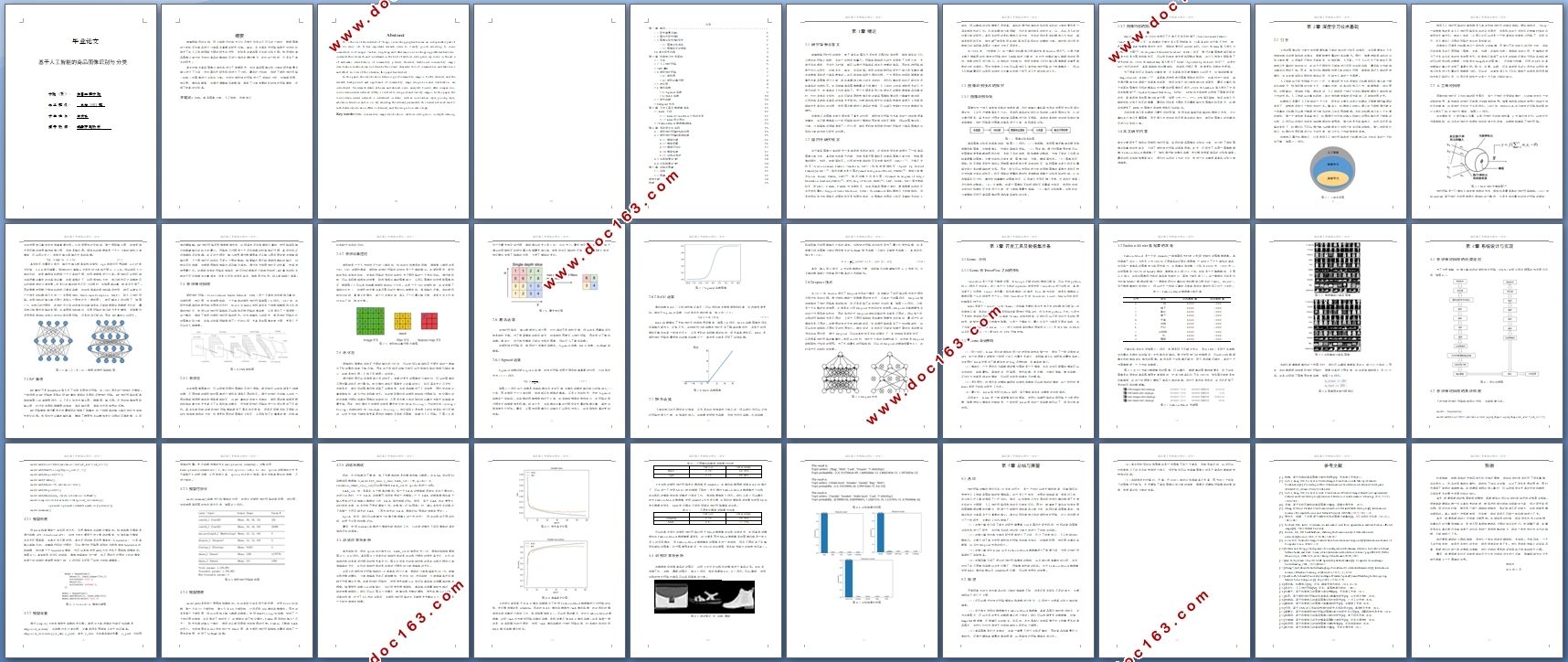基于人工智能的商品图像识别与分类

基于人工智能的商品图像识别与分类(任务书,开题报告,论文13000字)
摘要
随着物联网的兴起,网上购物已经成为人们日常生活中必不可少的一部份,根据图像的一些特征对商品进行分类具有重要的研究价值。淘宝、京东等各大网络购物平台也纷纷加大了在人工智能领域方面的研究与投资,特别是在商品图片自动识别方面。然而传统商品图像分类方法无法对商品的整体特征进行描述且费时费力,针对这一现状,于是有了本文的研究。
本文对如今商品图像分类技术进行了简要研究,并对商品图像识别分类的研究背景及意义进行了介绍,也对国内外研究现状进行了分析。最后经过比较,选用了卷积神经网络(CNN)对图像进行识别与分类。文中对卷积神经网络进行了详细的分析,比如卷积层、池化层、激活函数等,并通过调整相关参数等,得到了分类效果较好的神经网络模型,达到了较高的识别率。
关键词:CNN;商品图像分类;人工智能;深度学习
Abstract
With the rise of the Internet of Things, online shopping has become an indispensable part of people's daily life. It has important research value to classify goods according to some characteristics of images. Taobao, Jingdong and other major online shopping platforms have also increased their research and investment in the field of artificial intelligence, especially in the area of automatic identification of commodity pictures. However, traditional commodity image classification methods can not describe the overall characteristics of commodities and take time and effort. In view of this situation, this paper has studied. [资料来源:https://www.doc163.com]
In this paper, the classification technology of commodity image is briefly studied, and the research background and significance of commodity image recognition and classification are introduced. The research status at home and abroad is also analyzed. Finally, after comparison, convolution neural network (CNN) is selected to recognize and classify images. In this paper, the convolution neural network is introduced in detail, such as convolution layer, pooling layer, activation function and so on. By adjusting the relevant parameters, the neural network model with better classification effect is obtained, and the recognition rate is high.
Key words: CNN;commodity image classification;artificial intelligence;in-depth learning
[资料来源:www.doc163.com]

目录
第1章 绪论 1
1.1 研究背景及意义 1
1.2 国内外研究现状 1
1.3 图像识别技术的探究 2
1.3.1 图像识别系统 2
1.3.2 图像特征的提取 3
1.4本文研究内容 3
第2章 深度学习技术基础 4
2.1 引言 4
2.2 人工神经网络 5
2.3 BP算法 6
2.4 卷积神经网络 7
2.4.1 卷积层 7
2.4.2 卷积运算过程 8
2.5 池化层 8
2.6 激活函数 9
2.6.1 Sigmoid函数 9
2.6.2 ReLU函数 10 [资料来源:http://www.doc163.com]
2.7 损失函数 10
2.8 Dropout技术 11
第3章 开发工具及数据集准备 12
3.1 Keras 介绍 12
3.1.1 Keras与TensorFlow之间的关系 12
3.1.2 Keras设计原则 12
3.2 Fashion-Minist数据集的准备 13
第4章 系统设计与实现 15
4.1 卷积神经网络的形成流程 15
4.2 卷积神经网络的具体构建 15
4.2.1 模型创建 16
4.2.2 模型设置 16
4.2.3 模型可视化 17
4.2.4 模型搭建 17
4.2.5 训练与测试 18
4.3 训练结果与分析 18
4.4 识别结果与分析 20
第5章 总结与展望 22
5.1 总结 22
5.2 展望 22
参考文献 24
致谢 25
[资料来源:https://www.doc163.com]
